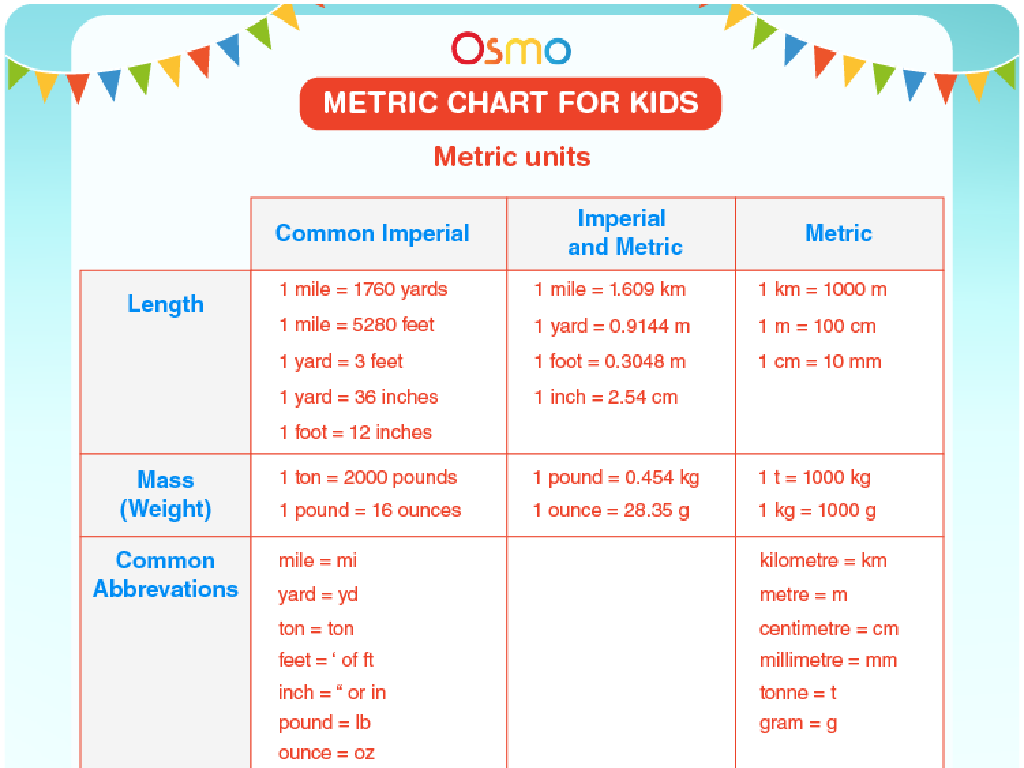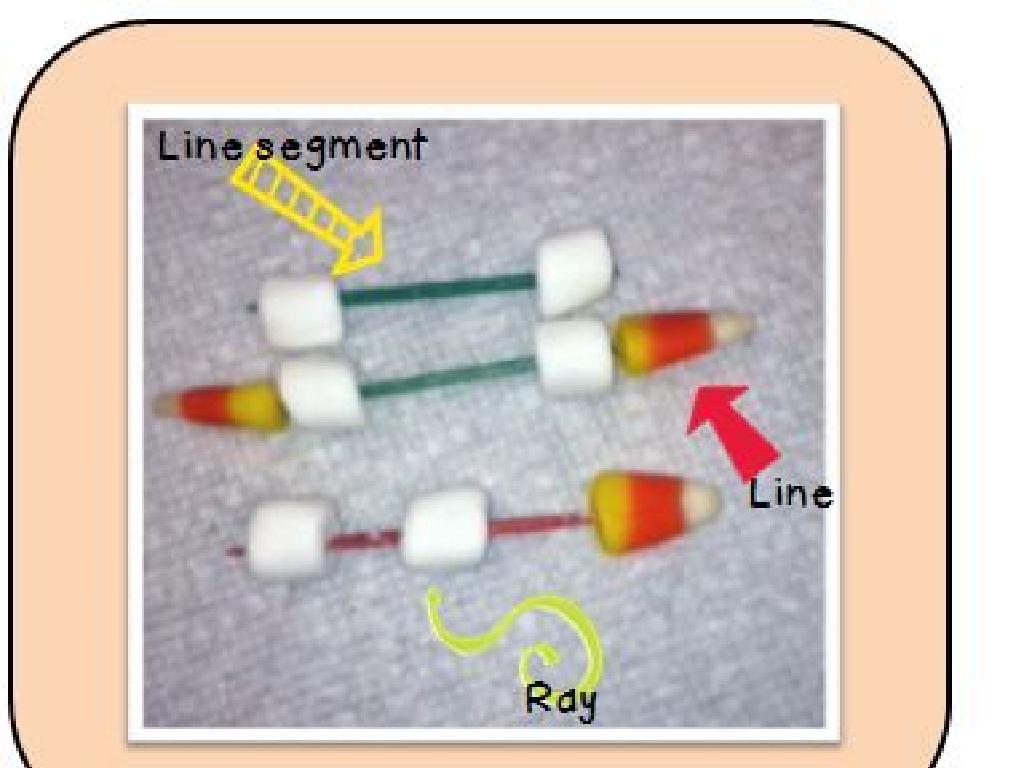How Do Plants Make Food?
Subject: Science
Grade: Fourth grade
Topic: Plants
Please LOG IN to download the presentation. Access is available to registered users only.
View More Content
Introduction to Plant Nutrition
– Exploring the plant world
– Plants eat without a mouth
– Plants absorb nutrients from soil and sunlight
– How plants make their food
– Using sunlight, plants convert CO2 and water into food
– Photosynthesis: A solar-powered process
– Photosynthesis uses sunlight to make glucose for energy
|
Begin the class by sparking curiosity about the plant world and how these living organisms survive without a mouth. Explain that plants get their nutrients from the soil and use sunlight to make their own food through a process called photosynthesis. Emphasize that plants are like little factories that use light energy to convert carbon dioxide and water into glucose, which they use for energy to grow. This process also produces oxygen, which is essential for humans and animals. Use simple terms and analogies suitable for fourth graders to grasp these concepts. Encourage questions and relate the process to their own experiences with plants.
What Are Plants?
– Plants are living organisms
– They grow, reproduce, and need energy
– Various types of plants exist
– Trees, flowers, grasses, and more
– Plants have unique characteristics
– Green leaves, roots, and they grow towards light
– Photosynthesis: plants make food
– Using sunlight, water, and carbon dioxide to create food
|
This slide introduces the concept of plants to fourth-grade students. Begin by defining plants as living organisms that share certain characteristics such as growth, reproduction, and the need for energy. Highlight the diversity of plant life by discussing different types such as trees, flowers, and grasses. Emphasize the unique features of plants like having green leaves, roots, and their tendency to grow towards light. Conclude with an introduction to photosynthesis, explaining that it’s the process by which plants make their own food using sunlight, water, and carbon dioxide. This sets the stage for a deeper exploration of how plants sustain themselves and contribute to the ecosystem.
The Ingredients for Plant Food
– Sunlight: Energy for plants
– Plants use sunlight to make energy, just like we need food to play.
– Water: Transports nutrients
– Roots absorb water to move nutrients around, like straws in a drink.
– Carbon Dioxide: Photosynthesis key
– Plants take in CO2 from the air for food-making process.
– Combining for food creation
|
This slide introduces the essential components required for plants to make their own food through the process of photosynthesis. Sunlight is the primary energy source that plants harness to convert carbon dioxide from the air and water from the soil into glucose, a type of sugar that plants use for energy and growth. Emphasize the importance of each ingredient and how they work together to create food for the plant. A good analogy for children is to compare the process to a recipe that needs specific ingredients to make a delicious meal. Encourage students to think about how plants are different from animals in that they make their own food using these ingredients.
Photosynthesis: The Recipe for Plant Food
– What is Photosynthesis?
– It’s how plants make their own food using sunlight!
– The Photosynthesis Equation
– 6CO2 (carbon dioxide) + 6H2O (water) + sunlight = C6H12O6 (glucose) + 6O2 (oxygen)
– Chlorophyll: Magic green pigment
– Chlorophyll makes plants green and helps them eat sunlight!
– Sunlight: The key ingredient
|
Photosynthesis is a crucial process for plants and is the way they produce their food. Begin by explaining the term ‘photosynthesis’ and its importance for plant life. Introduce the photosynthesis equation and break it down for the students: carbon dioxide and water combine with sunlight to create glucose, a type of sugar that plants use for energy, and oxygen, which is released into the air. Highlight the role of chlorophyll, the green pigment that captures sunlight. Emphasize that without sunlight, photosynthesis cannot occur. Use simple language and examples to make the concept relatable, such as comparing chlorophyll to a solar panel. Encourage students to think about the importance of plants in providing oxygen for us to breathe.
How Plants Make Food: Photosynthesis
– Chlorophyll absorbs sunlight
– Chlorophyll in leaves captures the sun’s energy
– Roots absorb water and minerals
– Water and minerals travel up from the roots to the leaves
– Leaves take in carbon dioxide
– Stomata: small openings under the leaf for gas exchange
– Plants produce glucose and oxygen
– Photosynthesis: Using sun to turn water and CO2 into food
|
This slide introduces the process of photosynthesis, the method by which plants create their own food. Begin by explaining the role of chlorophyll in capturing sunlight, which is the energy source for this process. Discuss how water and minerals are absorbed by the roots and transported to the leaves, where they are used along with carbon dioxide that enters through stomata. Emphasize that the combination of sunlight, water, and carbon dioxide results in the production of glucose, which is the food for the plant, and oxygen, which is released into the atmosphere. Use diagrams to illustrate the process and encourage students to think of plants as ‘food factories’ that use sunlight as their power source.
The Importance of Photosynthesis
– Photosynthesis feeds plants
– Plants make their own food through photosynthesis
– Produces vital oxygen
– Oxygen, produced during photosynthesis, is crucial for animal life
– Balances atmospheric gases
– Photosynthesis uses CO2 and releases O2, helping to keep the air clean
– Supports ecosystems
|
Photosynthesis is a critical process that allows plants to convert sunlight into food, which is essential for their growth and survival. This process not only benefits the plants but also has a significant impact on the entire ecosystem. Oxygen, a byproduct of photosynthesis, is necessary for the survival of animals and humans. Additionally, photosynthesis plays a vital role in maintaining the balance of gases in the atmosphere, as it consumes carbon dioxide and releases oxygen. Understanding the importance of photosynthesis helps students appreciate the interconnectedness of life and the role plants play in sustaining it.
How Plants Make Food: Real-Life Examples
– Plants in gardens making food
– Using sunlight, garden plants produce food through photosynthesis.
– Forest plants aiding ecosystems
– Forest plants create food, provide oxygen, and support wildlife.
– Aquatic plants in water ecosystems
– Water plants perform photosynthesis and offer oxygen for aquatic life.
|
This slide aims to show students real-world examples of how plants make food and contribute to their environments. In gardens, plants use sunlight to make food through a process called photosynthesis. In forests, plants not only make food for themselves but also provide oxygen and resources for a whole ecosystem, supporting various forms of wildlife. Aquatic plants, similar to their land counterparts, use sunlight to produce food and are crucial for maintaining the health of water ecosystems by providing oxygen and habitat for marine life. Encourage students to think about how these different environments affect the way plants grow and produce food.
Class Activity: Mini Greenhouse Project
– Gather your greenhouse materials
– You’ll need a clear container, soil, seeds, and water
– Follow steps to build your greenhouse
– We’ll provide a guide to set up your greenhouse correctly
– Observe your plant’s growth
– Watch how your plant changes and grows each day
– Record how your plant makes food
– Use your observations to learn about photosynthesis
|
This activity is designed to give students a hands-on experience with plant growth and understanding the process of photosynthesis. Each student will create their own mini greenhouse using simple materials. The teacher should provide clear instructions for setting up the greenhouse and guide the students through the process of planting seeds and watering them. Over time, students will observe changes in their plants, which will serve as a practical demonstration of how plants make food. They should record their observations, including any new leaves or height changes, which will be discussed in subsequent classes. The teacher should prepare additional resources on photosynthesis to help students connect their observations with the scientific concepts they are learning.

/mla_works_cited_format.png)




